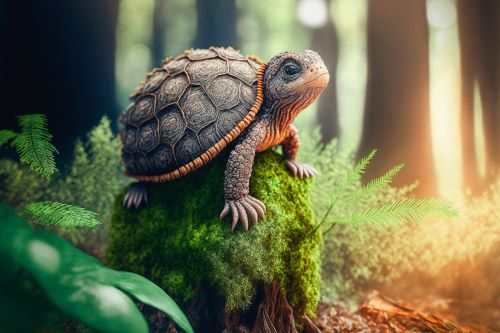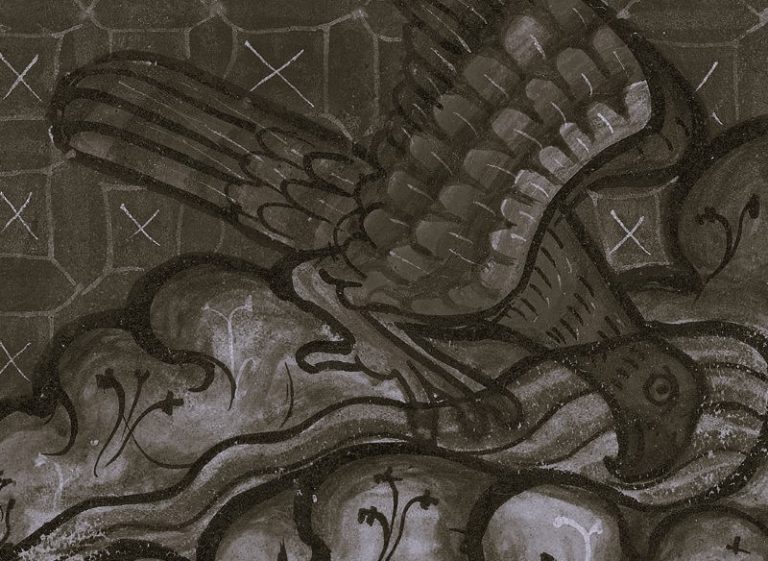

Throughout the annals of time, humans have been spellbound by the captivating allure of turtles, this enigmatic being that has bewitched our senses and kindled our boundless curiosity. From their exquisite physiognomy, which boasts an assortment of intricate features, to their mesmerizing life cycle that unravels like an enigma, turtles occupy a singular realm within the tapestry of the natural world.
In the following discourse, we shall embark upon an exhilarating odyssey, delving deep into the labyrinthine intricacies of the turtle’s life cycle and unearthing the mysteries that shroud their transformative voyage from diminutive hatchlings to venerable adults.
The Egg Stage: A Promising Beginning
The life cycle of a turtle commences with the captivating spectacle of egg-laying. Amidst the balmy seasons, female turtles embark upon a quest for idyllic nesting grounds on terra firma. Meticulously, they excavate the sand or soil, meticulously sculpting a cavity wherein they gently deposit their precious eggs. A protective veil of sand conceals the precious orbs, sheltering them from the perils of predators and the capricious whims of nature. This pivotal phase lays the cornerstone for the nascent turtles’ existence.
Truly extraordinary are the turtle eggs, adorned with a supple and resilient shell that facilitates the exchange of vital gasses, ensuring the burgeoning embryos obtain the life-sustaining oxygen they crave. Remarkably, the temperature prevailing during the incubation period serves as an arbiter of the hatchlings’ gender, as higher temperatures typically usher forth females while lower temperatures yield males. To gain more information, visit a useful source.
Hatching: The Struggle for Survival
Following a period of incubation, the duration of which varies depending on the specific turtle species and the surrounding environmental conditions, the newly-formed hatchlings commence their emergence from the protective confines of their eggs. This phase is often characterized by an awe-inspiring struggle for survival, wherein the diminutive turtles rely on their innate instincts to overcome the encumbrance of their eggshells and navigate towards the surface. A daunting journey unfolds, one that sternly tests their mettle, resilience, and unwavering resolve.
Equipped with a specialized tooth known as a “caruncle,” the hatchlings skillfully employ this apparatus to fracture the shell that has cocooned them. Once freed from their terrestrial confines, an instinctual compass guides their navigation, compelling them to instinctively direct their tiny bodies away from the nest and towards the luminous gleam that graces the water’s surface. Often, this ethereal radiance emanates from the moon’s shimmering reflection upon the aqueous expanse. This inherent response serves as their compass, guiding them unerringly towards their ultimate destination—the sanctuary of the boundless ocean or a nearby body of water.
The First Steps: Heading Towards the Water
Once the delicate hatchlings breach the surface, their instinctual compass unfailingly directs them on a precise trajectory—towards the nearest aqueous expanse. It is during this critical juncture, spanning the distance from the nurturing nest to the sanctuary of water, that a myriad of perils lie in wait, ready to pounce upon these vulnerable beings. Yet, those who deftly navigate the treacherous terrain are rewarded with the respite and security offered by the aqueous realm.
The hatchlings’ sprint towards the water’s embrace assumes paramount significance in their quest for survival. Reliant upon their diminutive flippers, they tirelessly propel themselves forward, bravely confronting a host of obstacles that impede their progress. Be it towering blades of grass, undulating sand dunes, or even man-made structures, their indomitable determination serves as an awe-inspiring testament to their innate purpose and the promise of a rebirth beneath the waves.
Aquatic Adventures: Juvenile Stage
Hatchlings become juveniles when they encounter water. They explore the aquatic world and grow robust and resilient throughout this period. Young turtles graze on aquatic vegetation, insects, and invertebrates in the water. This stage lets them grow and learn survival skills.
Turtles grow rapidly as juveniles. Predators are protected by their shells expanding and hardening. They start to develop species-specific marks. This stage is critical for their physical and behavioral development as they learn to navigate the seas and interact with other turtles.
Maturation: Becoming Adults
Juvenile turtles become adults, a major life stage. Maturation involves physical and behavioral changes. Turtles eat more prey and grow tougher shells. Reproduction and species survival require adulthood.
Some turtles attain sexual maturity in a few years, while others take decades. Turtles have secondary sexual traits at maturity. These include size, coloring, and structures like larger tails or thicker claws. Courtship and mate selection depend on these adaptations.
Nesting and Reproduction: Continuing the Cycle
Adult turtles reproduce. Following their ancestors, female turtles lay eggs on land. Males aggressively seek mates to preserve their genetic lineage. Turtles need to nest and reproduce to perpetuate the cycle of life.
Female turtles carefully choose a breeding site. They may return to the shore where they were born utilizing their natural navigation skills. After finding the right site, they use their hind flippers to dig a nest chamber in the sand and gently deposit their eggs. After covering the nest, females return to the ocean, leaving their children to fate.
Longevity: A Testimony to Survival
Turtles are famously long-lived. Some turtles can live over 100 years. Their long-term survival and adaptation demonstrate their resilience and evolutionary success. Turtles have survived many civilizations.
Turtle longevity has many causes. They have strong immune systems to fight diseases and infections. Their sluggish metabolisms help them live longer than most animals. Turtles can also mend and regenerate body parts.
Conservation: Protecting the Wonders of Turtles
As we study turtles’ amazing life cycle, conservation must be stressed. Pollution, habitat loss, and poaching threaten turtles. Conservation efforts preserve these magnificent species for future generations. Awareness and action can help preserve these natural beauties.
Turtle conservation involves many methods. Healthy populations require nesting site protection and human disturbance reduction. Education on turtles’ role in ecosystems promotes accountability and sustainability. Collaboration and international agreements boost conservation efforts by sharing information and resources.
Ultimately
The life cycle of turtles encompasses a tapestry of survival, reproduction, and unwavering determination. At each stage, from the emergence of hatchlings to the maturation of adult turtles, a realm of marvels and obstacles unfurls. Acquainting ourselves with their intricate life cycle instills within us a profound appreciation for these remarkable creatures and compels us to safeguard their invaluable natural heritage. Together, let us embark on a captivating journey, delving into the world of turtles, as we strive to preserve their splendor for generations to come.


